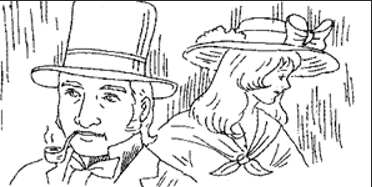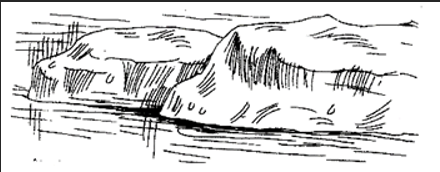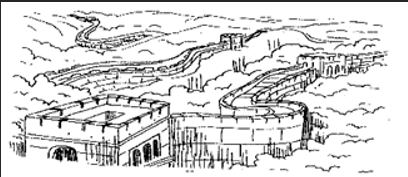English Important topics Worksheet for CBSE Class 4 Questions with Answer Download free PDF
Directions (1-4): Read the following passages carefully and answer the questions that follow:

No one knows for sure when the use of hats originated. But we do know why people wore them and still do. Hats are worn for two primary reasons. One, for protection, and two, for decoration. In parts of the world where the weather is hot and sunny, people protect their heads from the sun with wide-brimmed hats. Mexicans wear one such hat called the sombrero. Indians wear a topi, pagdee or a cloth roughly tied around the head.
A particular kind of pagdee or the turban is worn by the Sikhs for religious reasons. Farmers in Rajasthan and some other states wear a pagdee for traditional reasons as well as for protection from the Sun.
In other parts of the world where the climate is cold, people often wear woollen hats and some of them even have earflaps. Then there are decorative hats worn as an accessory to a person's clothing like a harlequin hat. A South American cowboy wears a hat, which is part of his traditional costume, while a North American cowboy wears a wide-brimmed hat, which protects him from the Sun.
A hat can also tell us about the occupation of its wearer. Fire-fighters, coal-miners, nurses and policemen wear special hats which look very common to their profession.
Q1. When did the use of hats originate?
(a) Long, long ago
(b) No one knows for sure
(c) In the cold season
(d) In Mexico
(e) None of these
Answer:
(b)
Q2. A sombrero is a ________.
(a) hat with ear flaps
(b) cloth tied round the head
(c) wide-brimmed hat
(d) fire-fighter's hat
(e) None of these
Answer:
(c)
Q3. Farmers in Rajasthan wear a pagdee ______.
(a) for religious reasons
(b) as a part of their tradition
(c) to protect themselves from Sun
(d) Both (b) and (c)
(e) None of these
Answer:
(d)
Q4. Fire-fighters, coal-miners, policemen and nurses ____.
(a) wear the same kind of hat
(b) wear colourful hats
(c) wear hats common to their profession
(d) Both (a) and (b)
(e) None of these
Answer:
(c)
A glacier is a huge block of ice that flows very slowly over land. Glaciers are formed in the North Pole and South Pole and in high mountains. The cold climate and low temperatures in these areas help large amounts of ice to collect and turn into ice blocks.
Glaciers begin to form when snow falls during the winter months. The snow builds up in layers and these layers get heavy because of their weight. Gradually, the ice becomes so thick that it begins to move because of its own weight and starts moving down the mountains. This happens due to the Law7 of Gravity. As the ice moves down the slopes mountains, it start melting slowly due to the heat of the Earth.

As glaciers move downwards, they also change the shape of the land they move on.
Most glaciers flow very slowly and move less than 30 centimetres a day. The various parts of a glacier move at different speeds. The central and upper part of a glacier flow the fastest. The sides and bottom move more slowly because they rub against the walls and floor of the valley.
The world's most famous glaciers are in Europe. They lie in the French and Swiss Alps.
They are Mer de Glace and the Aletsch Glacier. There are glaciers in North America as well, such as the Malaspina Glacier in Alaska.
Q5. The _____ climate and _____ temperatures help large amounts of ice blocks to form.
(a) low, warm
(b) warm, low
(c) cold, low
(d) cold, warm
(e) None of these
Answer:
(c)
Q6. Glaciers begin to form when:
(a) snow falls
(b) snow evaporates.
(c) snow moves
(d) Both (b) and (c)
(e) None of these
Answer:
(a)
Q7. The glacier moves downwards due to:
(a) the Law of Melting
(b) the Law of Evaporation.
(c) the Law of Freezing
(d) the Law of Gravity
(e) None of these
Answer:
(d)
Q8. The _____ and _____ part of a glacier flows the fastest.
(a) bottom, side
(b) central, upper
(c) centre, side
(d) upper, side
(e) None of these
Answer:
(b)
A rattle for a baby is a pleasant noise but a rattle at the end of the tail of a snake warns of danger. Rattlesnakes make a rattling noise to warn their enemy to stay away from them. Though, sometimes, they can bite without rattling.
The rattling sound of a snake is caused by horny pieces that are loosely joined together.
The pieces make a buzzing sound when the snake shakes its tail. However, rattlesnakes are not the only snakes that vibrate their tails. Several other harmless snakes do the same thing and people often mistake them for rattlesnakes. One way to tell the difference between a rattlesnake and a harmless snake is to see if the snake lifts its tail when it makes the buzzing sound. Rattlesnakes always do that whereas a harmless snake moves its tail back and forth on dry leaves or grass.

A rattlesnake gives out poison through two long hollow teeth, or fangs, in its upper jaw. These fangs fold back into the jaw when they are not used. They stick out only when the rattlesnake is about to strike its prey Birds and small mammals make up the rattlesnake's diet. These snakes are also useful to farmers as they eat rodents that destroy their crops. Humans should always stay away from rattlesnakes as they are among the most dangerous snakes in the world.
Q9. If a rattlesnake makes a rattling sound, it means ______.
(a) it is making a pleasant sound
(b) it is a harmless snake
(c) it is a danger warning
(d) the snake will not bite
(e) None of these
Answer:
(a)
Q10. Rattlesnakes can sometimes ______.
(a) bite without rattling
(b) vibrate their tails without rattling
(c) rattle without vibrating
(d) lift their tails while buzzing the sound
(e) None of these
Answer:
(c)
Q11. People often mistake ______.
(a) rattlesnakes for harmless snakes
(b) harmless snakes for rattlesnakes
(c) rattlesnakes for a baby's rattle
(d) a baby's rattle for a harmless snake
(e) None of these
Answer:
(b)
The longest structure ever built is the Great Wall of China. It runs 6,400 kilometres long and goes over hills, mountains and along the borders of deserts. The wall crosses northern China between the east coast and north-central China.
The Great Wall is made up of different materials from different places. For example, the eastern part of the wall has a foundation of granite blocks. It has sides of stone or brick and the inner side of the wall is filled with Earth. In the west, the Great Wall runs through hilly areas and along the borders of deserts where stone and brick were not easily available. In this part, the Wall is built with Earth that is moistened with water and then pounded to make it solid.

Several different rulers of China built walls to protect their borders from invaders.
Although it was intended to protect the rulers from invasion, it only served as a protection against minor attacks. Over the years, the Wall collapsed and was rebuilt.
The Chinese government in 1949 had to restore the wall.
Today the Wall is not used for defence purposes but is a tourist attraction for people from around the world.
Q12. The Great Wall of China runs ____ over ____.
(a) 7400 kms, hills and mountains
(b) 6400 kms, hills and mountains
(c) 7400 kms, hills, mountains and borders of deserts
(d) 6400 kms, hills, mountains and borders of deserts
(e) None of these
Answer:
(d)
Q13. The Wall crosses ____ China between the ____coast and north-central China.
(a) northern, west
(b) northern, east
(c) eastern, north
(d) eastern, west
(e) None of these
Answer:
(b)
Q14. In the east the Wall has foundation of ____.
(a) granite blocks
(b) wood
(c) marbles
(d) glass
(e) None of these
Answer:
(a)
Q15. In the west the Wall is made of ?___.
(a) stone
(b) brick
(c) earth
(d) granite
(e) None of these
Answer:
(c)